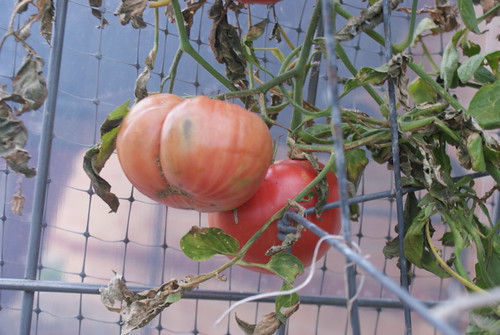
My November tomatoes, before last night’s precipitous temperature drop.
While I wouldn’t describe myself as a homesteader, I do like dipping my toe in the homestead pond. Really, I like swimming in it. That would be more accurate, as I do like to may a lot of my own shit and practice sustainability/self-sufficincy as much as possible. But I’m too techy and unisolated to really think of myself as a proper homesteader. Also, I live in a school, not a farmhouse. It’s weird defining myself.
ANYway, my point is that I’ve always loved DIY, but I feel coming out here has really unleashed my DIY spirit. Though I always had the impulse/interest in Austin, I never got around to trying out some of my favorite makes.
Yesterday, instead of TCB in proper work fashion. I did a little life TCB, which included 2 projects: the greenhouse, and brewing.
First the greenhouse. Before I get started, I say “experiments” in homesteading because most of my attempts are fails. In everything, not just new stuff. Half of what I knit, I frog and reknit. I would estimate three quarters of my completely new projects fail or disappoint. Most of this comes from overestimating my creative/engineering abilities and “improving” the plan. I should know by now not to do that, but I never seem to learn. If I actually follow instructions–or try to, anyway–my success climbs to about 50%. The only realm where I have consistent success is cooking. 90% of what I make is yummy, with only the odd new recipe sucking.
So the greenhouse, formerly the chicken coop. We’ve had a very mild fall, with a handful of nights in the 20s and mostly mild days. So my makeshift sloppy greenhouse covering more or less preserved my tomatoes this far (most of the vines were dead/dying, but the fruit was in good shape and it was ripening slowly and deliciously–way better than pre-frost green-picked tomatoes ripening indoors).
I knew a harder freeze (19F/-7C was the prediction when I started; when I went to sleep last night, they were saying 13F/-10C–a significant difference in maintaining a protective temperature bubble) was coming, so I decided to properly finish up my hastily-covered greenhouse. I covered the front in plastic, stapled down through duct tape-reinforced edges, closed up the back as much as I could (there wasn’t enough clearance to get the staple gun in there, sadly), taped the seams, added an interior bed sheet curtain to act as a buffer between the plants and gaps in the door, and covered gaps in the back with other sheets. Then I turned on the 250 watt lamp and hoped for the best.
I also–and this was the ill-conceived step–cut back all the dead leaves and vines that were leading nowhere. My thought was that while the vines were still green in much of the plants, the leaves were dead, which means no photosynthesis, right? And no photosynthesis means they’re pointless, yes? So I figured I’d cut them all back and clean everything up, clear out the decaying leaves, keep it healthier, stay on top of any bug problems, and actually be able to see all the fruit, so I wouldn’t miss any and let it go off. I’d also get a better picture of what was still alive.
In retrospect, though, that was probably stupid for 2 reasons: 1) I suspect the dead leaves at least had some insulating properties and 2) that might have been a shock to the plants.
But let’s climb into the time machine and go back to yesterday afternoon, when I still thought I was clever for having November tomatoes.
Here’s the greenhouse from the front door, with the curtain pulled back. The whole thing was cleaned up and all the fruit had been retied to hang out of the way. I was even daydreaming of bringing in a few chairs and a little table this winter to enjoy reading a book or surfing the net while my tomatoes ripened around me in the shelter of my nice little greenhouse.
The cleanup revealed a surprising amount of living vines, and even a lonely little blossom!
But instead of having a low of 19 for a few hours, it was much colder for much longer, and I’d be surprised if the greenhouse raised the temperature more than 5 degrees or so. I won’t know for sure until I open it up and survey the damage. I’m leaving it shut until it’s above freezing outside, on the off chance that there’s a magical pocket of warm air keeping everything safe and sound. I did peer through the plastic and I can tell already that the rest of the vines seem to have been killed. I’m just hoping most of the fruit’s alright. Otherwise, I’ll be making a lot of green tomato chutney this weekend.
My key problem was believing the forecast. I should know by now that it’s never right, and I should plan for several degrees worse. If I had been thinking 13 instead of 19, I might have lined the inside with additional sheets, or simply cut down all the vines and brought them inside to ripen, instead of kidding myself my wimply little greenhouse would protect them. I spent a lot of time this morning beating myself up for not just cutting down the vines and bringing them inside, but it’s Science! How will I know for sure if I don’t experiment?
Okay, it’s not really science, since I don’t know the actual temperature outside or inside the greenhouse, just the Weather Channel’s version. I actually bought a wireless weather station but forgot to set it up in time, or I would have a little data I could learn from.
But if I hadn’t already worked up the makeshift greenhouse, those tomatoes would have all been dead at the end of September–most of them were far to immature to even bother picking green at the time. And with Yarn School and travel, I wouldn’t have had time to do anything with them anyway, so they probably would have just rotted.
So that’s me looking on the bright side. At the very least, I got almost two extra months of fresh tomatoes and now I’ll have some more for sauces or chutney either way. And I’ve got a workable base for a greenhouse. It should still be ample for winter greens, and for early starts for next year’s crop. Maybe with a greenhouse in place, I’ll get the full yield of heirloom tomatoes–they always take so long that the frost hits well before they peak.
My other homesteady experiment was brewing. I talked a little bit about my hare-brained ginger beer exploits earlier. Aside from the stuff we bottled a couple weeks ago, I kept back about a third, which I fed a bunch of sugar for several days. I stopped fermenting a few days ago and I finally had time to bottle the rest last night.
Here’s what I learned: don’t use a siphon/bottler on a big bucket full of grated ginger and lemon zest. What a mess. Also: read the label before you add things. The carbonation tabs I used were meant for beer (they included malt in addition to dextrose, so the ginger beer may taste a bit more like actual beer).
I won’t know until I drink it whether it’s actually boozy, but it smells boozy. I’m going to leave it at room temp for a few more days to ferment out the carbonation tabs, then move it to the fridge and taste it. If it’s remotely good, I’ll try again using proper sanitation and equipment and WAY more ginger.
I also started my first batch of beer, nut brown ale from a kit from the Topeka homebrew place, Ale-N-Vino. The guy there was very nice, helpful, and reassuring, and actually discouraged me from going overboard with purchases until I’ve made a few batches. I’m one of those people who tends to buy EVERYTHING for a potential new hobby before I’d even decided if it really is a new hobby, so I appreciated the vote for restraint. I got my cider/beer kit the Christmas before last and hadn’t yet used it. I thought I’d get acquainted with my equipment via a beer kit, then try out some cider blended from a mix of commercial Kansas cider and juice from the CSA/local apples and pears I’ve been squirreling way in the fridge.
Since I’ve only ever proofed bread yeast, last night I was convinced the yeast was a dud, but this morning, the airlock was bubbling away like a champ. I think the primary fermentation is supposed to be a week, then it goes into the carboy for another 10 days, then into bottles for 3-5 weeks, and we’ll have beer for the new year!
The airlock (above) lets the CO2 bubble out without letting any contaminants into the brew. I’m going to buy a second airlock so I can start my cider next week in the primary fermenter (read: big plastic bucket with an airlock), after I transfer the beer to the carboy. I accidentally went off book a little with the process, but my sanitation was great and my starting gravity was as as it was supposed to be. The kit takes out all the guesswork, so I think I’ll have plenty of wiggle room and produce a decent product even if I’m a little off.
Oh, and I finished my handspun socks:
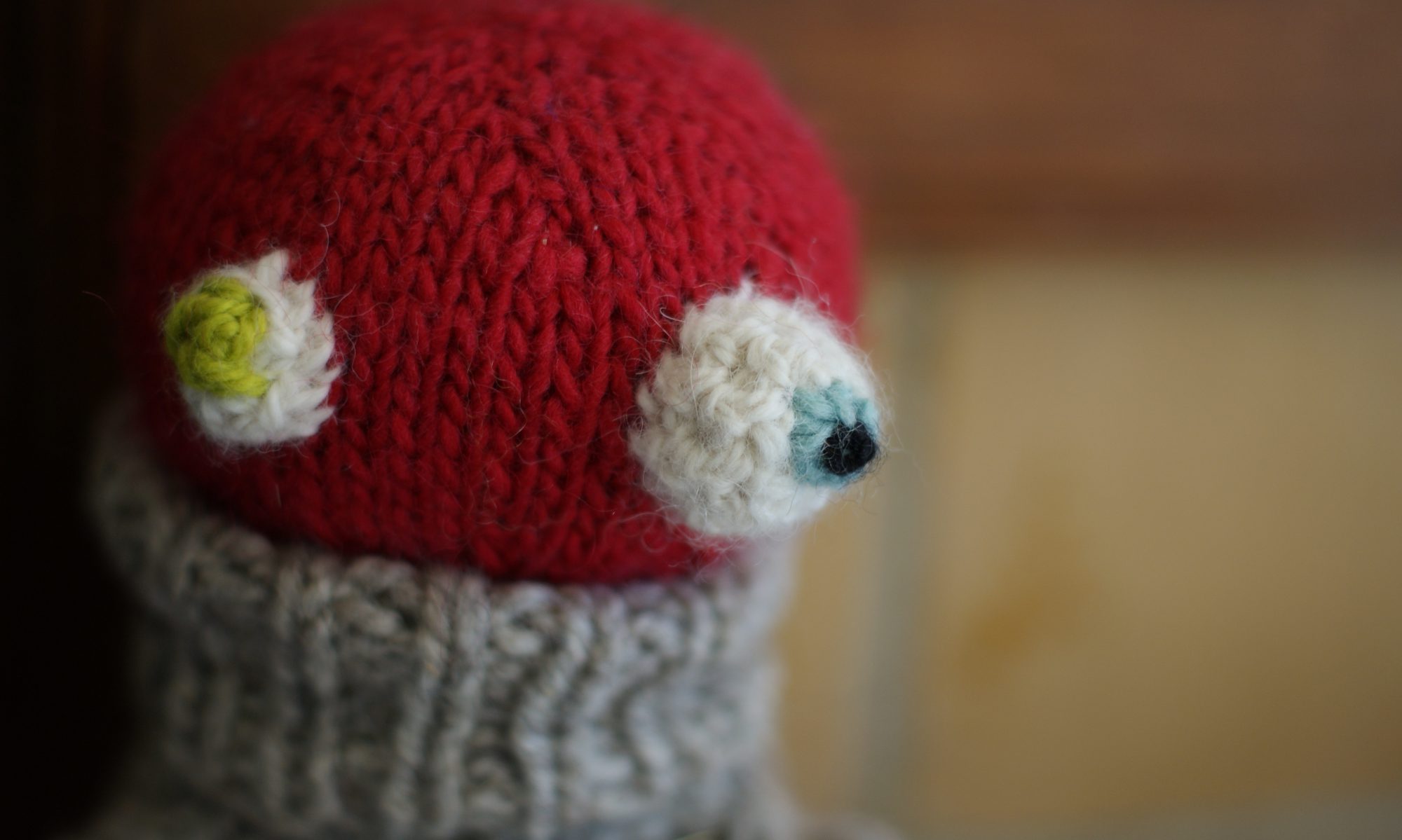
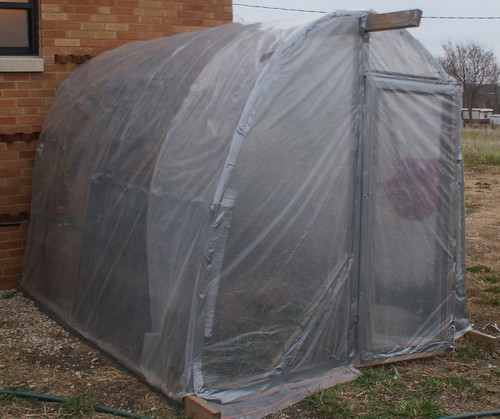
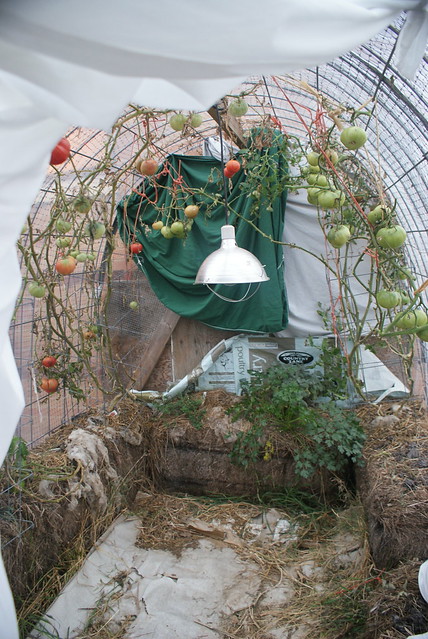
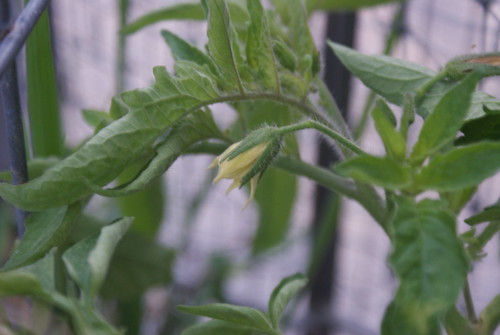
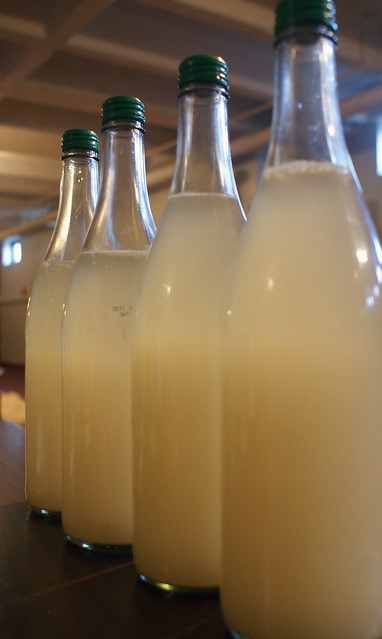
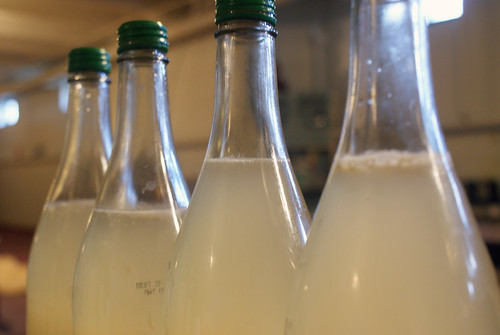
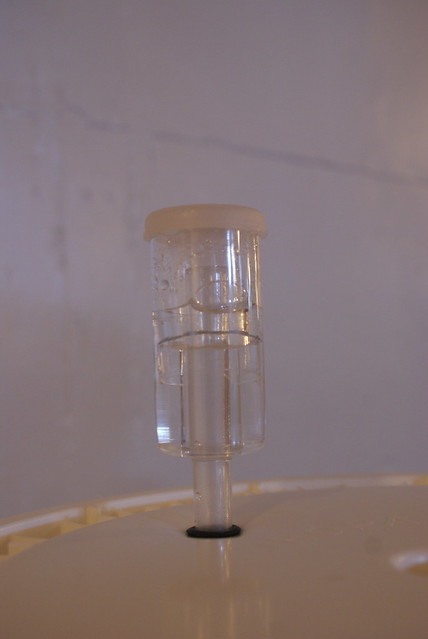

I think you should get the DIY first prize!
The socks turned out great!!!!